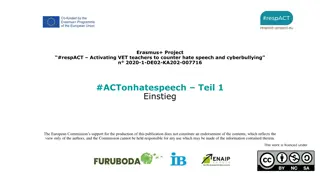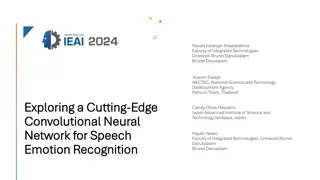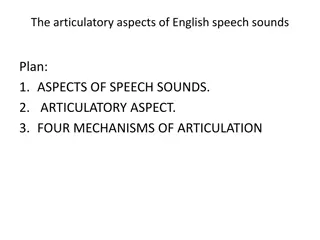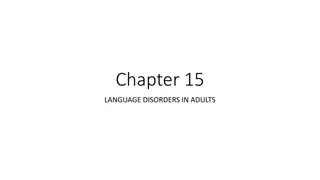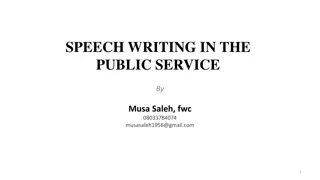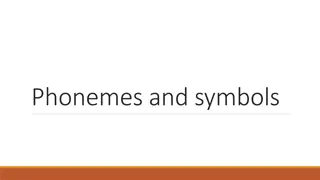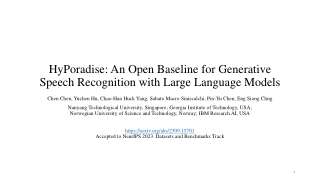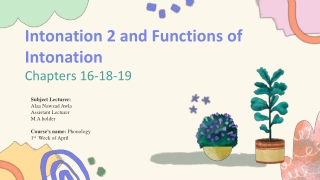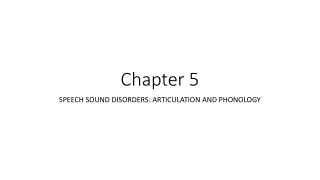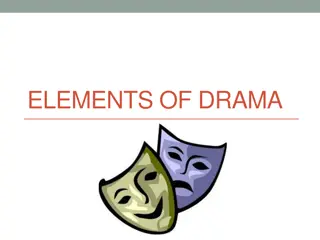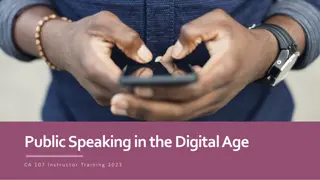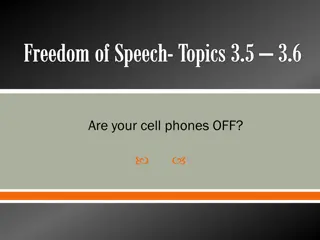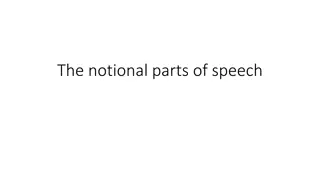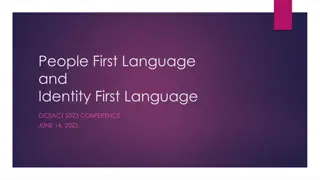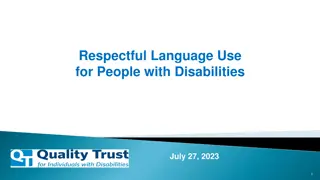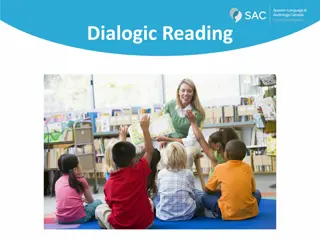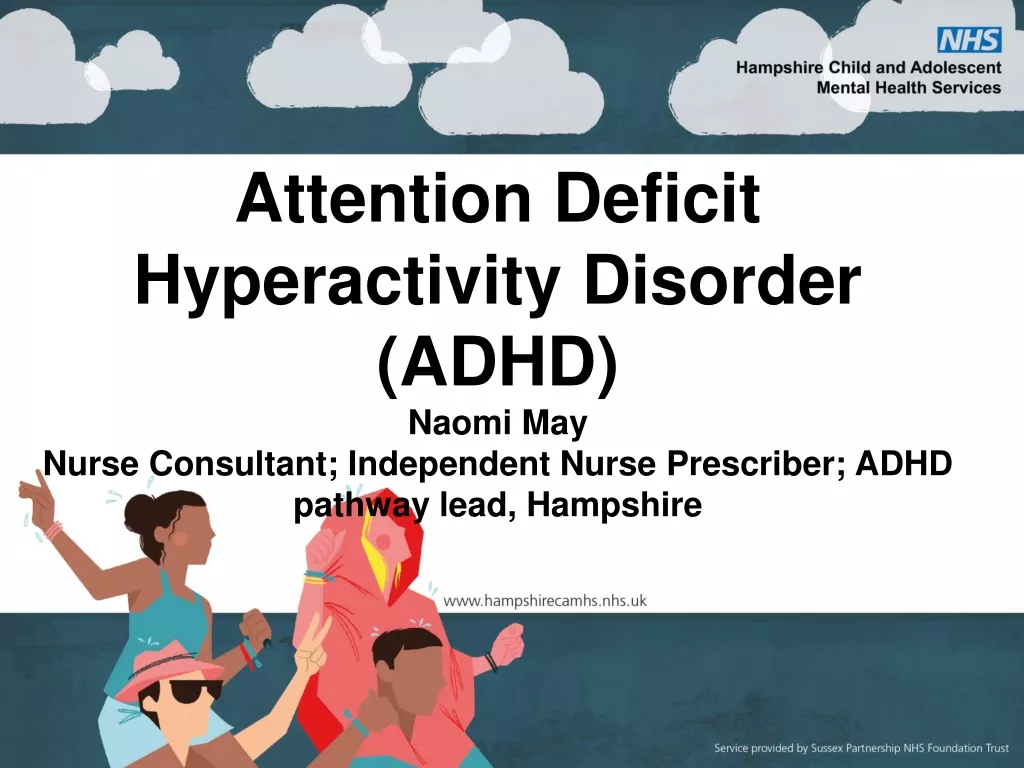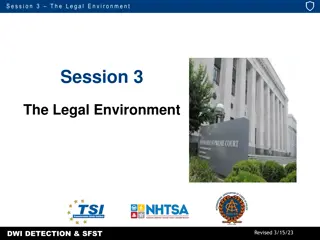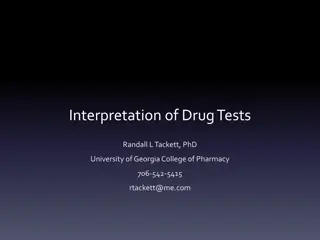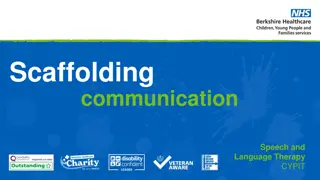Speech/Language Impairment
Explore the impact of speech and language impairment on educational performance, criteria for identification under IDEA, eligibility considerations, and the role of communication disorders. Gain insights into language dimensions and speech production processes.
Download Presentation
Please find below an Image/Link to download the presentation.
The content on the website is provided AS IS for your information and personal use only. It may not be sold, licensed, or shared on other websites without obtaining consent from the author. Download presentation by click this link. If you encounter any issues during the download, it is possible that the publisher has removed the file from their server.
Presentation Transcript
Speech/ Speech/Language Language Impairment Impairment
Definition Definition IDEA Definition 300.8 (c) (11) Speech or language impairment means a communication disorder, such as stuttering, impaired articulation, a language impairment, or a voice impairment, that adversely affects a child s educational performance. Communication is the interactive exchange of information, ideas, feelings, needs, and desires Communication involves A message A sender who expresses the message A receiver who responds to the message Functions of communication Narrating Explaining/informing Requesting Expression
Definition Part 2 Definition Part 2 Language is a formalized code that a group of people use to communicate with one another. The five dimensions of language: Phonology Morphology Syntax Semantics Pragmatics Dialects are the learned patterns of speech and language appropriate to families and communities. Speech is the oral production of language. Speech sounds are the product of four related processes: Respiration Breathing that provides power Phonation Production of sound by muscle contraction Resonation Sound quality shaped as it passes through the throat, mouth, and sometimes the nasal cavities Articulation Formation of recognizable speech sounds
Eligibility Criteria Eligibility Criteria Speech Language Impairment is a clinical term as well as a disability identification. Criteria for SLI under IDEA requires documentation of educational impact and need for specially designed instruction and is different from clinical or medical diagnosis. SLI includes impairments in articulation, language (e.g., expressive, receptive, and pragmatics or social language), voice, fluency, and swallowing when it impacts the student s education. When the student s communication difficulties occur primarily because of another disability, such as Autism or Intellectual Disability, the team should consider the use of speech as a related service to address the deficits. Documentation of educational impact should clearly indicate that while a communication impairment exists, the primary cause is another disability area. The primary cause of the communication impairment should be described. Additionally, the team may document any recommendations to the IEP Team to consider speech language therapy as a related service or highlight areas of educational need. Refer to SLP Services in the Schools: Guidelines for Best Practice (2018) and SLP Services in Schools 2020 Revisions for additional guidance on Speech-Language Impairment evaluation and eligibility determinations. When addressing the criteria question about socio-cultural dialect or limited English proficiency being the primary cause, teams should examine the contributions of student s dialect or English learner (EL) status to student communication issues. Features of some dialects or overgeneralization of features from another language (e.g., word order, marking plurals, tense, or gender) may mistakenly be viewed as an impairment when they are typical for that student s language system. The team should quantify the amount of impact that is dialect/LEP and what is thought to be a result of a true speech-language impairment.
Professional Advocacy Organizations Professional Advocacy Organizations American Speech-Language-Hearing Association | ASHA The American Speech-Language-Hearing Association (ASHA) is the national professional, scientific, and credentialing association for 228,000 members and affiliates who are audiologists; speech- language pathologists; speech, language, and hearing scientists; audiology and speech-language pathology support personnel; and students.
Identification and Assessment Identification and Assessment Screening and Teacher Observation Evaluation Components Case history and physical examination Articulation Hearing Phonological awareness and processing Vocabulary and overall language development Assessment of language function Language samples Observation in natural settings
Prevalence Prevalence In 2020 21, the number of students ages 3 21 who received special education services under the Individuals with Disabilities Education Act (IDEA) was 7.2 million, or 15 percent of all public school students. 19% of all school-age children in special education, ages 3 through 21 years, received special education under the category of SLI . SLI is the second-largest disability category. Approximately two thirds of school-age children served by S L Ps are boys. About 50% of children who receive special education services because of a primary disability also have communication disorders. The percentage of children with speech and language disorders decreases significantly from the earlier to the later school grades.
Causes Causes Speech Impairments Cleft Palate Paralysis of the Speech Muscles Absence of Teeth Craniofacial Abnormalities Enlarged Adenoids Traumatic Brain Injury Dysarthria Language Impairments Developmental and Intellectual Disabilities Autism Traumatic Brain Injury Child Abuse and Neglect Hearing Loss Structural Abnormalities of the Speech Mechanism Aphasia Genetics Environmental Influences
Characteristics Characteristics Speech Sound Errors Speech Sound Errors Distortions Substitutions Omissions Additions Articulation disorders A child is not able to produce a given sound physically because that sound is not in his repertoire Phonological disorders A child has the ability to produce a given sound and does so correctly in some instances but not in others Fluency disorder is an interruption in the flow of speaking characterized by atypical rate, rhythm, and repetition in sounds, syllables, words, and phrases. Stuttering and cluttering are examples Voice disorders A phonation disorder causes the voice to sound breathy, hoarse, husky, or strained Resonance disorders result in hypernasality or hyponasality
Characteristics Characteristics Language Disorders Language Disorders Language disorders involve problems in one or more of the five dimensions of language: Phonology Morphology Syntax Semantics Pragmatics Language delay implies a child is slow to develop linguistic skills but acquires them in a typical sequence. Language disorders suggests a disruption in the usual rate and/or sequence in which specific language skills emerge.
Instructional Strategies Instructional Strategies Articulation and phonological errors: Discrimination and production activities Fluency disorders: Behavioral principles and self-monitoring Voice disorders: Medical examination and direct vocal rehabilitation Language disorders: Vocabulary building, naturalistic interventions Augmentative and Alternative Communication (AAC) refers to a diverse set of strategies and methods to assist individuals who cannot meet their communication needs through speech or writing. A A C entails three aided or unaided components A representational symbol set or vocabulary A means for selecting the symbols A means for transmitting the symbols Symbol sets and symbol systems for A A C Selecting the symbols Transmitting the symbols
Accommodations/Modifications for Speech Accommodations/Modifications for Speech The most effective support for students with speech impairments is to receive speech therapy given by a speech-language pathologist (SLP). Based on speech severity, allow the student to substitute oral assignments with written papers or use other available technologies. Modify grading based on speech impairment. Allow the student time to express themselves. Do no interrupt a slow speaker. Provide the SLP with spelling/vocabulary lists. Allow the use of assistive technologies. Develop a procedure for the student to ask for help. Be a good speech model and speak directly to the student. Reduce unnecessary classroom noise as much as possible.
Accommodations/Modifications Accommodations/Modifications - - Language Language Students are greatly benefited by receiving language therapy from a speech-language therapist (SLP). Provide the student with information on topics prior to going over them in class. Minimize classroom noises and distractions. Provide copy of class notes. Give assignments both orally and written. Allow extended time for assignments and tests. Modify the length of assignments. Provide a private location for testing. Allow use of adaptive technologies. Provide SLP with spelling/vocabulary lists. Pre-teach words/ideas before using them in a real situation. Do not assume understanding of spoken instructions. Ensure student has a way to appropriately express wants and needs. Ask open-ended questions. Present only one concept at a time. Work at the student's pace. Use tactic and visual cues (e.g. pictures, 3-D objects). Use as many hands-on experiences as possible. Graphic organizers are useful in helping students organize and understand various language concepts.
Placements Placements In 2018 2019, 88% of children with speech or language impairments were served in the general education classroom for at least 80% of the school day. Some examples of service delivery models: Monitoring Pullout Collaborative Consultation Classroom or Curriculum Based Separate Classroom Community Based Combination
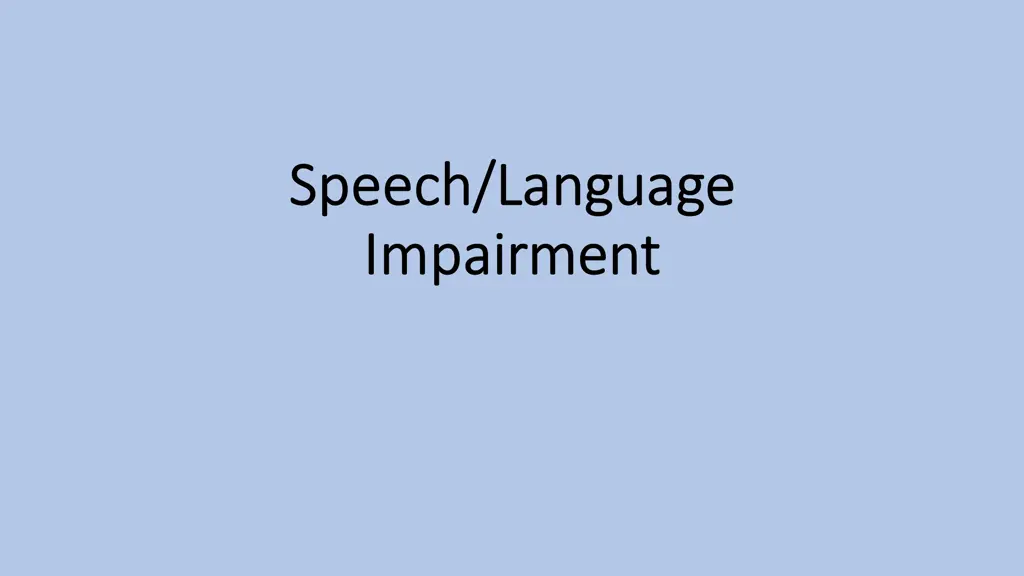




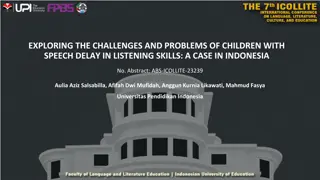
![Prevention and Combating of Hate Crimes and Hate Speech Bill [B.9B.2018]](/thumb/60513/prevention-and-combating-of-hate-crimes-and-hate-speech-bill-b-9b-2018.jpg)
